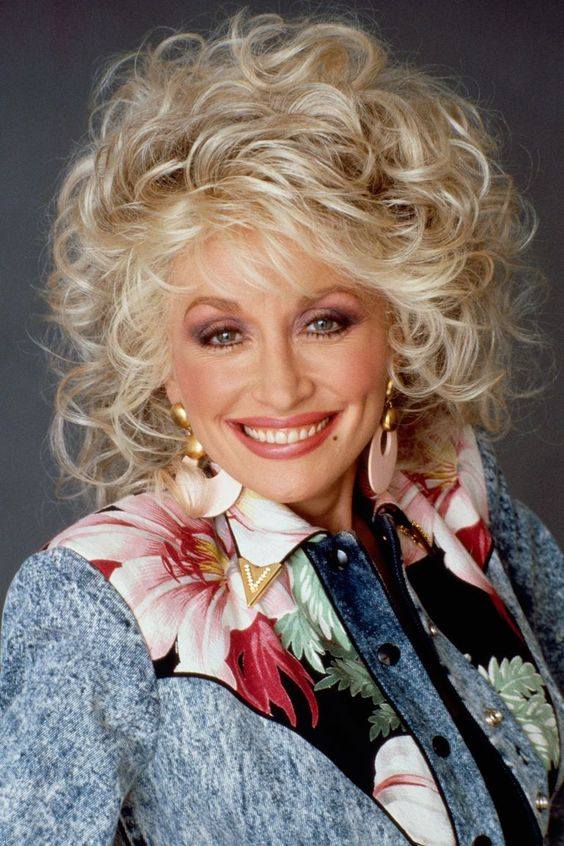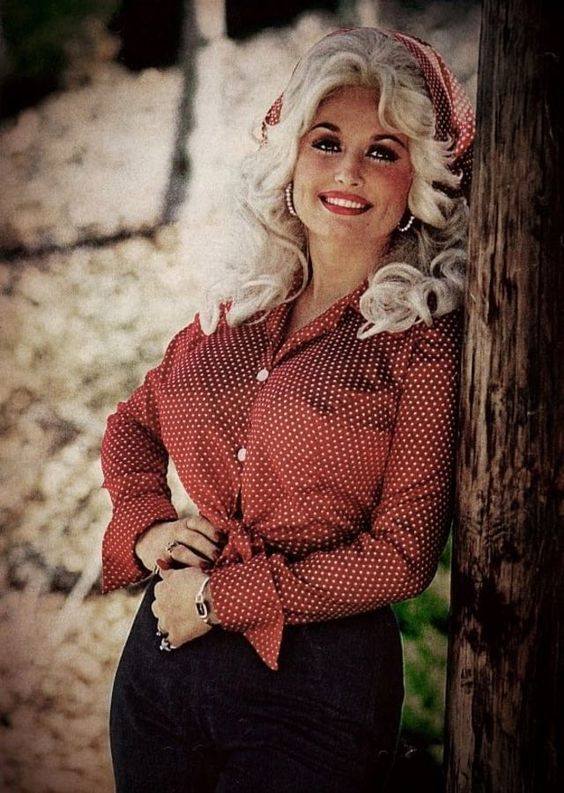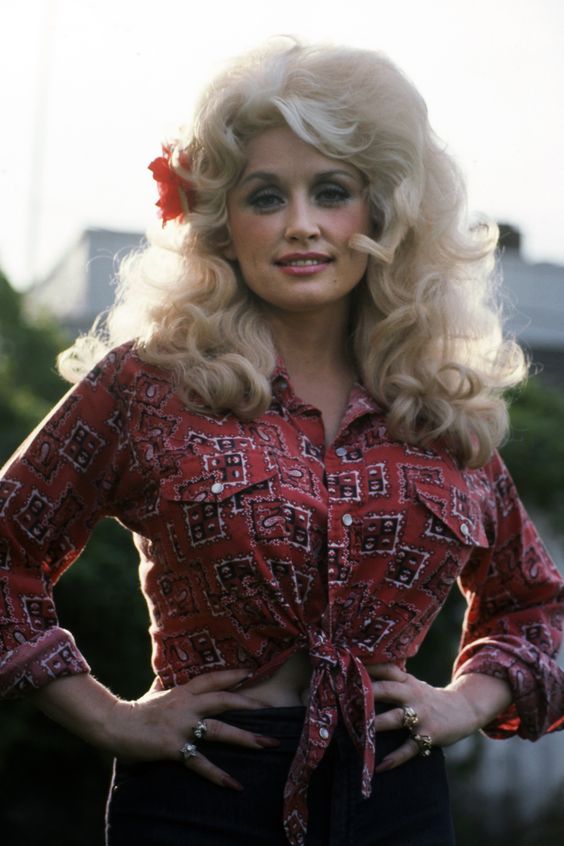
Dolly Parton’s Big Break at 18: From Smoky Mountains to National Television
Dolly Parton, one of the most iconic entertainers of our time, got her start in the Smoky Mountains of East Tennessee. Born on January 19, 1946 in Sevierville, Tennessee, Dolly was the fourth of twelve children born to Robert Lee Parton and Avie Lee Owens Parton. She grew up in a one-room cabin on the family farm, surrounded by the natural beauty of the Appalachian Mountains. However, Dolly’s upbringing was far from idyllic – her family lived in deep poverty. Still, music provided solace and joy even in their hardest times.
Dolly’s parents and grandparents all enjoyed singing and playing instruments. Her mother Avie Lee had a beautiful singing voice and often sang hymns and folk songs around the house. Her father Robert Lee played the banjo, among other instruments. This rich musical heritage heavily influenced young Dolly. From a very early age, she showed a great talent and passion for singing and songwriting. By age six, she was performing on local radio and television stations.
Dolly’s family struggled financially, but they supported her musical aspirations. In 1956, when Dolly was just 10 years old, her parents helped her travel to Nashville to perform on the Grand Ole Opry. Though she was turned away due to her young age, it was an early glimpse into the world of professional country music. Back home in the Smokies, Dolly continued honing her craft. She spent hours practicing her guitar and vocals, writing songs about the people and places that surrounded her idyllic yet impoverished upbringing.
In her early teens, Dolly began performing publicly wherever she could. She sang at fairs, festivals, and on local radio and TV. By age 16, she had dropped out of high school to support her family by working various odd jobs, including cleaning houses and factories. Despite the responsibilities of adulthood weighing heavy, Dolly never stopped pursuing her musical dreams. She was determined to make it in Nashville one day.
At age 18 in 1964, Dolly decided it was time to take the leap. With just $200 in her pocket, she left Tennessee behind and moved to Nashville to seek her fortune. However, success did not come easy at first. Dolly struggled to break into the male-dominated country music industry. She worked low-paying jobs as a typist, maid, and factory worker to make ends meet while pursuing her music career on the side. During this difficult period, Dolly nearly gave up on her dreams entirely.
Fortunately, Dolly’s raw talent and persistence paid off. In 1965, she met up-and-coming country star Bill Phillips and was invited to join his touring show. This provided Dolly with her first real stage experience performing across the South. It was also during this time that she met legendary country singer and songwriter Bill Anderson, who helped Dolly land her first record deal with Monument Records.
In 1967 at age 21, Dolly’s career finally started to take off. She recorded her debut single – an original song called “Dumb Blonde” that shed her stereotype with humor and honesty. The song became a modest hit, catching the attention of the country music community. Most significantly, it led to a life-changing opportunity – a chance to join the cast of The Porter Wagoner Show, one of the most popular syndicated programs on American television at the time.

Porter Wagoner was already an established star, known for his flashy Nudie suits and top-selling records. His TV show was a variety program that showcased the biggest names in country music each week. When Dolly was offered the chance to join as Porter’s duet partner and opening act, it was her big break. Being part of The Porter Wagoner Show gave Dolly national exposure for the first time, allowing her to perform for mass audiences each week.
Dolly made her debut on the show in July 1967. Her vivacious personality, powerful vocals, and comedic timing were an instant hit with viewers. Over the next seven years, Dolly and Porter recorded several chart-topping duets together including “The Last Thing on My Mind,” “Just Someone I Used to Know,” and “Daddy Was an Old Time Preacher Man.” Their playful on-screen chemistry also attracted fans. Dolly was blossoming into a major star in her own right.
Off the stage, Dolly’s career continued gaining momentum as well. In 1967, she signed her first solo record deal with RCA Victor and released her self-titled debut album. This led to her first solo hit – the autobiographical single “Something Fishy” which peaked at #17 on the country charts. In 1969, Dolly won the prestigious Female Vocalist of the Year award from the Country Music Association, cementing her status among music industry peers.
The 1970s brought even greater success and recognition for Dolly. She and Porter continued having hits together on The Porter Wagoner Show and releasing collaborative albums. Meanwhile, Dolly started venturing into other creative avenues like acting. She made her film debut in 1972’s Porter Wagoner Show , which was a major TV movie at the time. Critically acclaimed roles in films like 9 to 5 and Steel Magnolias soon followed.
By 1974, Dolly had established herself as a superstar in her own right. She decided it was time to step out on her own and embark on a solo career separate from Porter. This was a risky move that most industry experts advised against. However, Dolly’s self-assured intuition proved correct as usual. Her 1974 solo album Jolene became her breakthrough record, spawning the iconic title track “Jolene” which cemented her status as a formidable female artist.
The rest of the 1970s saw Dolly churning out one hit song and album after another. She wrote and recorded enduring classics like “Coat of Many Colors,” “You’re the Only One,” and “Here You Come Again” that resonated deeply with her fanbase. In 1977, Dolly even ventured into Broadway with the musical Nine to Five. She was truly a multi-faceted entertainer operating at the peak of her creative powers. Critical acclaim and popular success followed in equal measure.
As the 1980s dawned, Dolly remained one of country music’s most prolific hitmakers. She collaborated with stars like Linda Ronstadt and Emmylou Harris. Meanwhile, she continued to diversify her brand through other business ventures. In 1986, Dolly opened the highly successful Dollywood theme park in Pigeon Forge, Tennessee. She also published her autobiography and launched her signature wig and clothing lines.
Dolly had truly cemented herself as the “Queen of Country Music.” But she wasn’t done growing her empire yet. In the 1990s, she expanded into television production with the hit series Dolly on CBS. She also returned to her film career with acclaimed roles in movies like Steel Magnolias. Dolly’s music continued evolving as well – she collaborated with pop and bluegrass artists, stretching the boundaries of her sound.
In the new millennium, Dolly remains a beloved icon. She continues recording new music, going on tour, acting in films and television, and expanding her business interests. In 2019, Dolly received the Presidential Medal of Freedom – the highest civilian honor bestowed by the United States government. Through it all, Dolly has stayed true to her East Tennessee roots, using her platform to give back through philanthropic efforts focused on literacy, childhood hunger, and more.
Looking back, it’s clear that Dolly Parton’s “big break” wasn’t any single moment but rather a culmination of talent, hard work, and determination that started from a young age in the Smoky Mountains. Her big chance to join The Porter Wagoner Show provided the national platform to truly shine. But it was Dolly’s raw charisma, songwriting gifts, and business savvy that propelled her from that small-town 18-year-old into an eternal global superstar. Today, Dolly remains one of country music’s most revered icons – a true rags-to-riches American success story.
